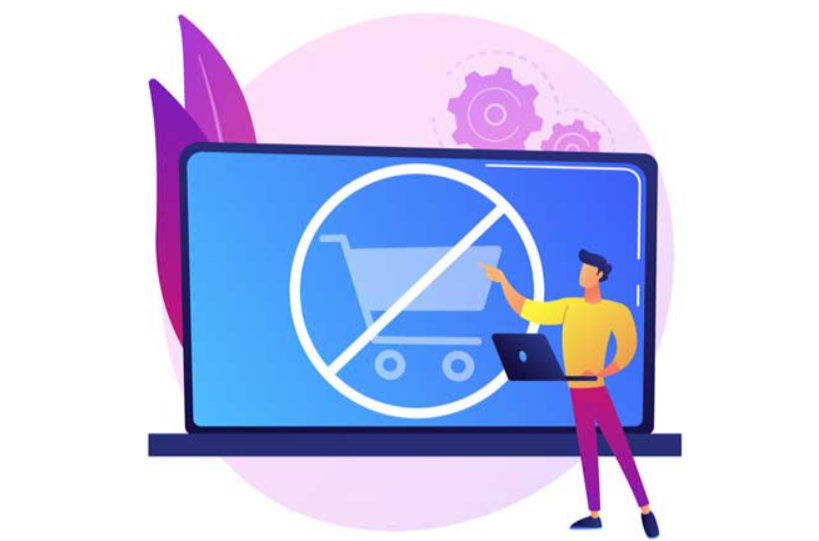Does churn sound familiar? It’s a term that marketers don’t like very much, and they are right.
Because churn is the number of customers who abandon your services or products, relatively or totally.
In e-commerce, the churn rate is particularly difficult to evaluate.
However, it is important to calculate it and to follow it regularly, in order to limit this nightmare scenario, but inevitable.
Calculating the churn rate is even the only solution to lower it and boost the performance of your business in the long term.
We explain everything in this article and also share some tools and applications that allow you to track and reduce your churn.
Churn: translation and definition
The translation of churn or churn rate is attrition or churn rate. The definition of churn is: the proportion of customers who give up on your products or services. Customer attrition can be either relative, i.e. they give up one product to consume another of your brand, or total.
Total attrition is when the customer switches to the competition or stops consuming a product altogether. For example, he replaces cotton pads with washable wipes.
Churn is a normal phenomenon for any type of business. Not only is it almost impossible to retain a customer for life, but consumers are becoming more and more volatile.
Because they are always more solicited, because there are always new products, new brands, because sales channels are multiplying (social networks) and because consumption patterns are changing (ecological crisis, digital transformation, artificial intelligence, etc.).
The first thing to do, when you are interested in your attrition rate, is to look at what the average rate is in your sector.
What is the churn rate in e-commerce?
The churn rate in e-commerce is difficult to evaluate, because customers are hard to track.
Originally, the churn rate concerns companies whose business model is based on a subscription formula. Typically banks, service providers such as telephone, Internet or streaming operators, or the press. In these cases, the churn rate is very simple to calculate since it is enough to count the churn.
In these sectors, the churn rate varies between 5% for banks and 30% for telephone operators. Which is logical, it is much more complicated to change bank than operator.
In e-commerce, it’s more complicated, because unless you work on a subscription basis (for example private sales sites or online consumables stores), you can’t know if a customer will leave you for good.
An e-merchant will be able to track the number of cart abandonments.
The figures on shopping cart abandonment remain approximate, but it is estimated that in France, the rate is around 70% on average, all sectors included. Ideally, you should count them yourself. But in any case, you know that the figure is important and it is normal.
Having said that, let’s remember that a cart abandonment does not mean that the person will never come to your site again.
Another way to estimate an e-commerce churn rate is to compare the number of customers between two months. It’s up to you to decide what makes a customer active in your business and to choose the metric that will allow you to calculate the attrition.
We can also deduce a churn rat e-commerce through the conversion rate. In e-commerce, this is on average 5% and rises to 20% for the most successful online stores. We can see that this figure corresponds to previous estimates.
In summary, to estimate a reasonable churn rate in e-commerce:
Do not exceed 80% of cart abandonment on your online store
Make sure that your acquisition rate does not exceed your churn rate
Do everything you can to follow up and retain your customers (increase the retention rate)
Calculating the churn rate
Churn calculation should be done regularly, ideally every month, because it evolves rapidly. If you do it at this rate, it will also serve as a compass and will help you assess your marketing campaigns, identify possible seasonal patterns, peaks or drops in consumption.
If from one month to the next, you notice a jump in your churn rate for no apparent reason, investigate. Maybe there is a technical problem on your site or a big competitive launch in your sector.
You’ll calculate your attrition score based on the criteria you choose that define your active customer.
For example, you run a printer consumables business, with monthly subscriptions.
In month M, you have 120 monthly subscriptions and the following month 20 less.
Calculation of the churn rate: 20/120 x100 = 16.66
Your churn rate is therefore 16%. But it is possible that you have acquired 22 additional subscriptions in the meantime, in which case, don’t worry!
If you don’t have a subscription system, you can always calculate the churn rate approximately as follows
Number of customers last month – number of new customers.
The difference between the two is your churn rate.











More Stories
A Step-by-Step Guide to Building Your Online Store
Why should you choose web.com
Budget Shared Hosting for Hostgator